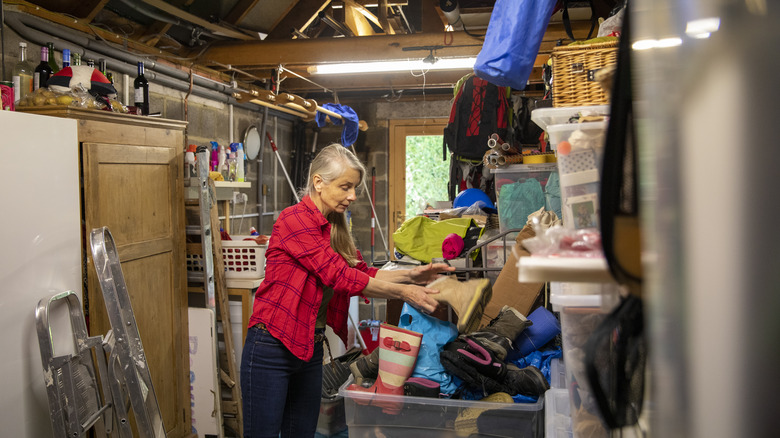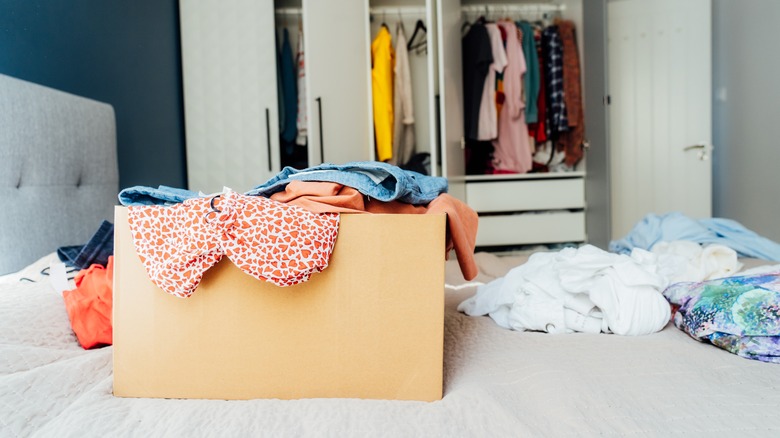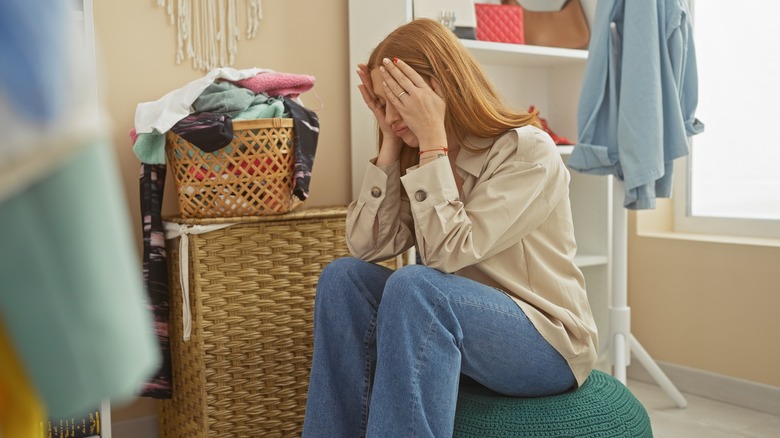This Smart Decluttering Technique Is A Surefire Way To Get Rid Of Things For Good
Cluttered surfaces within your home can quickly make it look cramped and overwhelming. With our busy lives everything can build up and sometimes relegate the task to that fated, often-mentioned "tomorrow." Once you begin to declutter, sometimes you might begin thinking that you really do need these things you're tempted to remove. What if that random charging cord comes in handy, or you need that pack of discounted holiday cards you bought five years ago? It can be easy to get caught up in the "but I might need it" cycle but sometimes what you really need is to get some space from your items, which is why the decluttering method technique of "no contact" is so helpful. This form of decluttering involves gathering items you may want to discard into a box, then giving yourself a deadline for when you open the box. That way you will know if you missed the items or if you really don't need them.
We sometimes develop emotional attachments to our belongings and that can make them harder to part with — even if it's something as simple as a T-shirt or a favorite mug. Yet, if you find yourself paralyzed by the idea of having to give away something dear, then you may not be able to enjoy the benefits of decluttering which according to Hackensack Meridian Health include better self-esteem, decreased stress, and improved focus. When it's time to declutter, consider using the no-contact technique to break up with your stuff and banish the associated guilt. Here's how.
Using the no-contact method for decluttering
The no-contact method of decluttering is simple but can offer some big benefits. First, collect all of the items you don't presently need now but you're unsure about donating. You can start with the items from a single room then move to the other spaces in your home. If possible, you can do a quick and easy decluttering in less than 10 minutes, or take longer. There are no set rules about what to put in the box, but don't put in anything that's broken, as those items should be in the trash. Start with one or two boxes, preferably with a lid. Sort the items into your boxes, then label each with the contents.
Once you fill your boxes, move them to a secure area where you won't necessarily see them every day. You might be tempted to open the boxes, so place them hidden in a closet, an attic, or in a garage. Pick a specific deadline for returning to the boxes. A good rule is six months, however, you can pick a shorter time period. During this time, pay attention to how you feel about the items, whether you miss them or not, as this will guide whether you really want to keep them or donate them.
More tips and tricks for no-contact decluttering
Doing no-contact with items that you may want to remove from your house makes you more mindful of your belongings and what you consume. With this in mind, when decluttering, you should stick to the boxes and bins you already have. Buying new ones will just bring more items into your home. If you find you're overwhelmed and don't know where to start, pick one room, then try the Pomodoro technique to power through the space. Set a timer, then work through everything for 25 minutes, with a brief five-minute break. Repeat until you've gathered everything for your no-contact box.
This method may not work for everyone. For instance, space may be at a premium at your house, which can make it harder to store no-contact boxes for a long time. If you feel the no-contact approach isn't the right fit for you, explore some of the other strategies for decluttering your home instead.


